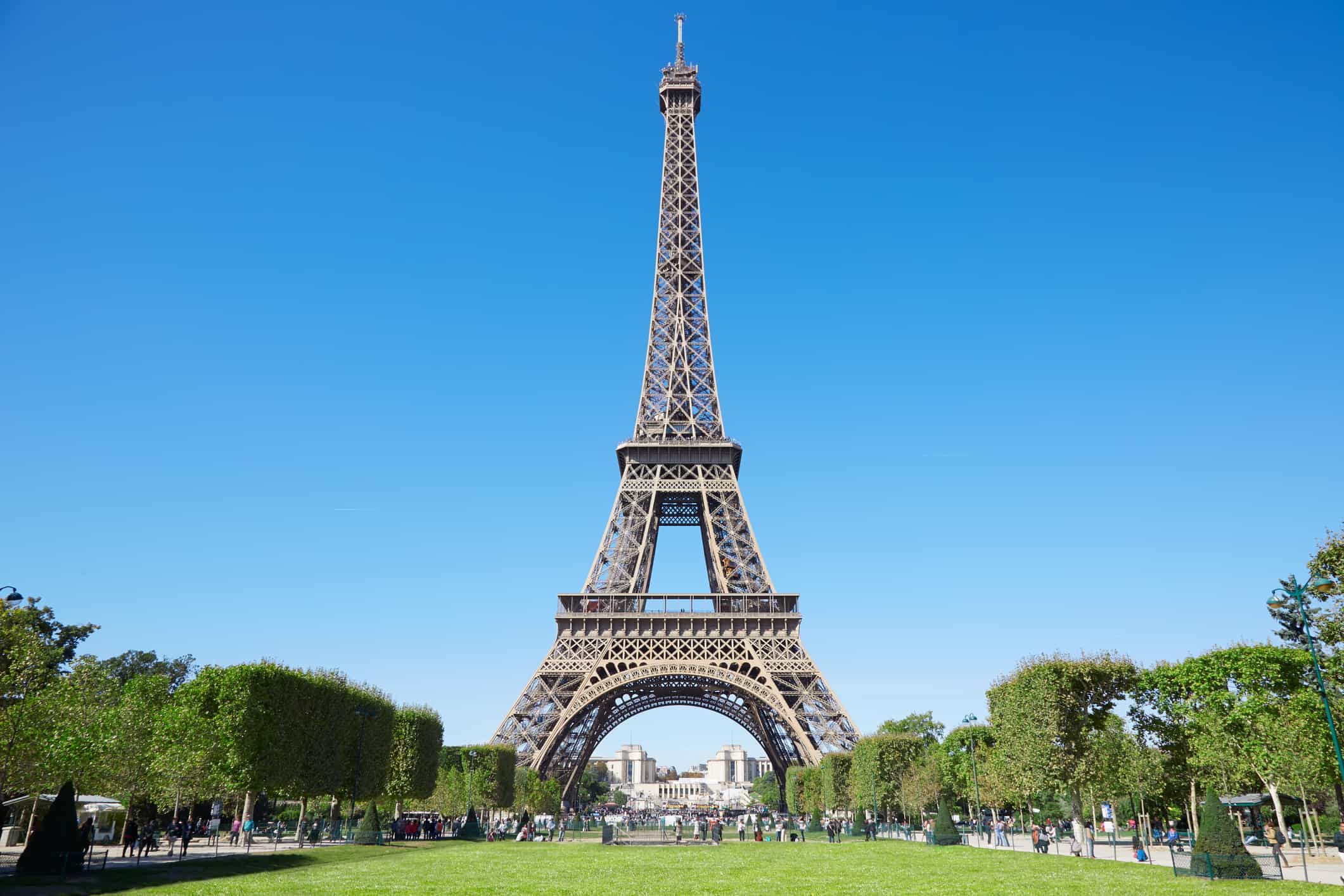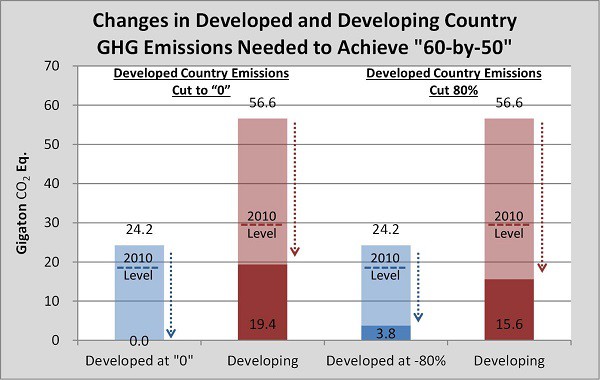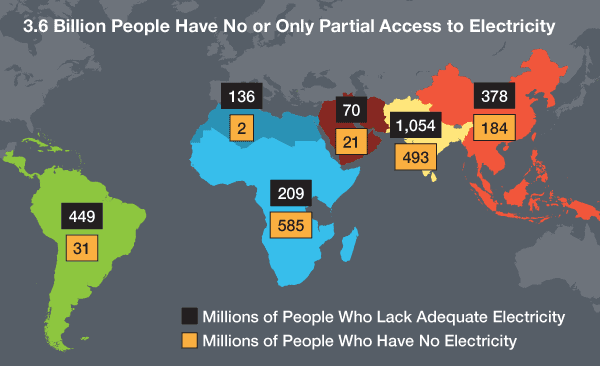Failure to Renounce Paris Climate Deal Would Create Major White House Policy Conflict

 On the campaign trail, presidential candidate Donald Trump said he would “cancel” U.S. participation in the Paris Agreement, a climate treaty largely conceived and aggressively promoted by the Obama administration. Trump now appears to be back-pedaling.
On the campaign trail, presidential candidate Donald Trump said he would “cancel” U.S. participation in the Paris Agreement, a climate treaty largely conceived and aggressively promoted by the Obama administration. Trump now appears to be back-pedaling.
The Wall Street Journal reported yesterday that President Trump’s son-in-law and senior advisor, Jared Kushner, and Trump’s daughter Ivanka “intervened to strike language” critical of the pact from a forthcoming executive order on climate policy.
The Journal also recalls that when Secretary of State Rex Tillerson was CEO of ExxonMobil, he “backed the Paris deal, and he broadly reiterated his support in his confirmation hearing, saying he thinks the U.S. is better served by staying in the accord rather than withdrawing.”
Citing the Journal, the online news service ClimateWire today reported that “Ivanka and Jared saved the Paris Agreement—for now.” Apparently, though, the administration still claims the impending executive order will “knock out” President Obama’s Climate Action Plan.
The executive order once targeting the Paris Agreement is a broad directive to agencies to increase fossil energy development. It calls for a review of the Clean Power Plan, implemented under former President Obama to cut carbon emissions from power plants 32 percent by 2030. The Supreme Court stayed the rule in February 2016.
The executive order also “knocks out” Obama’s Climate Action Plan, a broad framework issued in 2013 for carbon reductions across several economic sectors, according to a source. It also targets a moratorium on new coal leases on federal land, enacted under Obama.
That is deeply conflicted. Both functionally and textually, the Paris Agreement is the capstone of Obama’s Climate Action Plan.
The Agreement’s main political function, as envisioned by the Obama administration, is to exert relentless pressure on the next president, the U.S. Congress, and even courts to perpetuate Obama’s climate regulations as “legacy” policies.
Some conservative lawmakers and pundits dismiss Paris as a paper tiger because the treaty’s emission-reduction commitments are “non-binding” under international law. But, as explained here, the Agreement does bind parties to make emission-reduction promises, known as “nationally determined contributions” (NDCs), and “report” increasingly “ambitious” NDCs every five years. Moreover, nations honor those non-binding promises by turning them into domestically-binding laws and regulations. Other nations may feel free to treat promises as rhetorical fluff, but not the United States. As a GEICO ad might put it, “When you’re America, you keep your promises; it’s what you do.”
So if Trump upholds the Paris Agreement, he will be honor-bound to preserve Obama’s Climate Action Plan. Indeed, our NDC is essentially a promise to keep Obama’s Climate Action Plan intact and then ramp up our climate “ambition” over time.
Tellingly, the Climate Action Plan culminates in a section titled “Leading Efforts to Address Climate Change through International Negotiations.” The section is a clarion call for the negotiations and treaty that became the Paris Summit and Agreement:
And in 2011, at the year-end climate meeting in Durban, we achieved another breakthrough: Countries agreed to negotiate a new agreement by the end of 2015 that would have equal legal force and be applicable to all countries in the period after 2020. This was an important step beyond the previous legal agreement, the Kyoto Protocol, whose core obligations applied to developed countries, not to China, India, Brazil or other emerging countries. The 2015 climate conference is slated to play a critical role in defining a post-2020 trajectory. We will be seeking an agreement that is ambitious, inclusive and flexible. It needs to be ambitious to meet the scale of the challenge facing us. It needs to be inclusive because there is no way to meet that challenge unless all countries step up and do their part.
Mr. Kushner and Ms. Trump are no doubt smart people. But have they thought about the inescapable conflict between Trump’s promise to liberate America’s energy producers from regulatory overreach and the energy-suppression measures required by the Paris Agreement?
In addition, have they thought about how America’s participation in the Paris Agreement vitiates the separation of powers?
Even though treaty-making is a shared power under Article II, Section 2 of the Constitution, Obama declared the United States to be a party without submitting the Paris Agreement to the Senate for its advice and consent. Why did he do that? Because even when Sen. Harry Reid (D-NV) was majority leader, there was no chance “two thirds of the Senators present” would vote to ratify new international climate commitments.
How did Obama justify bypassing Article II, Section 2? He claimed that the Paris Agreement, despite being most “ambitious” environmental pact in history, was not a treaty. Hence he could adopt it, on his sole authority, as an “executive agreement.” Anyone who actually reviews previous environmental executive agreements will see immediately that they do not properly engage the attention of the world’s greatest deliberatively body—unlike the Paris Agreement, with its immense potential costs and risks for the U.S. economy, dependence on future congressional legislation, and potential impacts on state laws and policies.
How did Obama pull it off? He acted on the pretense that the President alone decides whether a particular agreement is or is not a treaty. In other words, the President can avoid submitting an unpopular treaty to the Senate just by deeming it to be a non-treaty.
That is a dangerous precedent. If allowed to stand, it will undermine one of the Constitution’s critical checks and balances. Whatever tenderness Mr. Kushner and Ms. Trump may feel for Obama’s promises to the United Nations, President Trump took an oath to uphold and defend the Constitution.
Finally, have Mr. Kushner and Ms. Trump thought about how the Paris Agreement imperils the world’s poorest people? As I explain in a previous post:
The actual climate influenced by fossil fuel emissions is already on track to meet the Paris Agreement’s 2°C climate “stabilization” target. But if we assume the validity of the modeled climate based on “consensus” science, the 2°C limit on global warming cannot be achieved without imposing painful sacrifices on developing countries.
Stephen Eule of the U.S. Chamber of Commerce’s Institute for 21st Century Energy has done the math. If industrial countries like the U.S. magically reduce their emissions to zero by 2050, the 2°C target is still unattainable unless developing countries cut their current CO2 emissions by 35 percent. If, less unrealistically, industrial countries reduce their emissions by 80 percent, developing countries would have to cut their current CO2 emissions almost in half—by 48 percent.

Nobody knows how developing countries can simultaneously eradicate energy poverty over the next few decades and reduce their consumption of the world’s most abundant, affordable, and reliable energy sources by 35 percent or more. Note: An estimated 1.3 billion people have no electricity, another 2.3 billion have too little electricity to support development. Putting an energy-starved world on an energy diet obviously has the potential to be a cure worse than the alleged disease.
